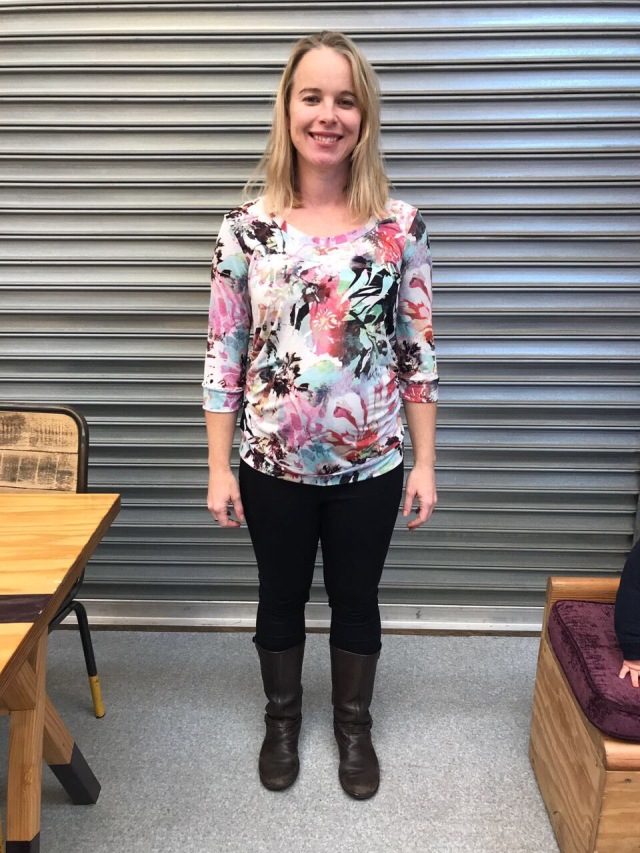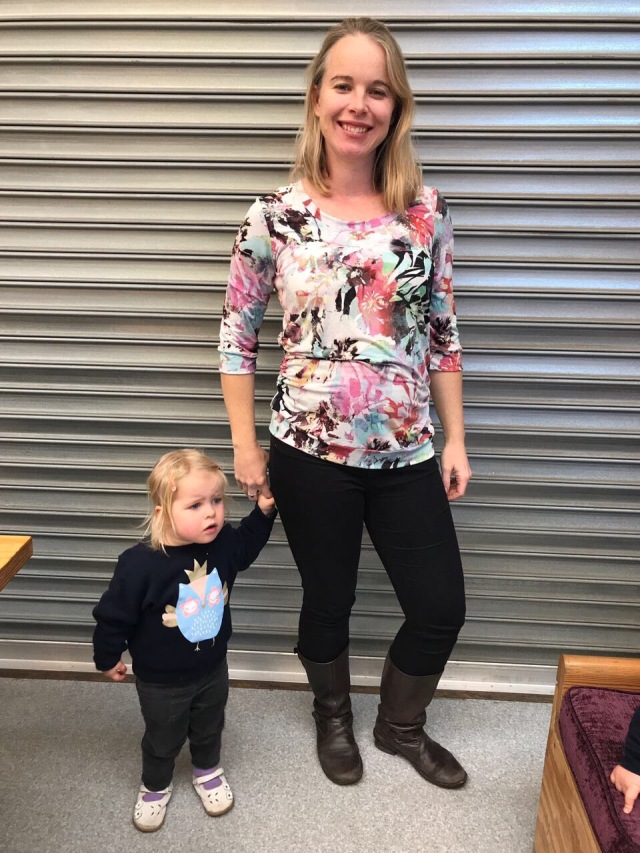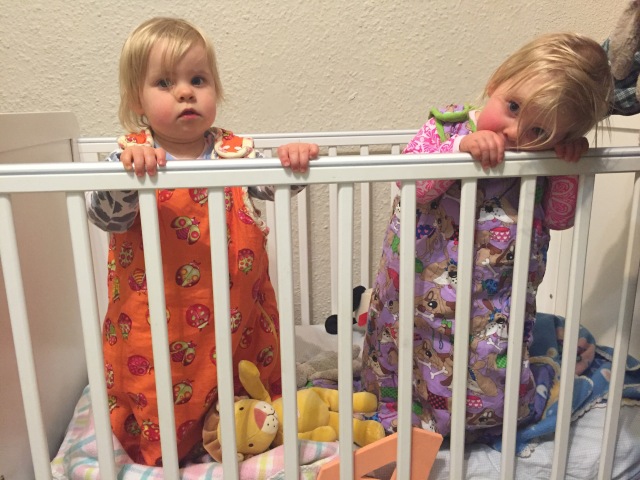Our exciting (read: overwhelming, a little scary and physically uncomfortable right now) news is that we are welcoming another member to our family…any day now!
Besides the mental preparation, financial and logistical considerations and general nesting, what it has also meant is that I’ve had zero clothes to wear especially since my first pregnancy was during a very hot Sydney summer and this one was mainly through winter. I have borrowed most of my wardrobe and bought some key pieces but, of course, couldn’t really justify spending much money on clothes I’d only wear for a few months when I have piles of fabric that are aching to be made into something wearable.

First up: The Floral Renfew Maternity Hack. I love this pattern from Sewaholic and have made a few versions that have been well loved. I decided that this was as good a place to start as any. I then did a bit of research on how to adjust a pattern for maternity. There are differing schools of thought on this one and the clearest tutorials I could find were from Melly Sews. She provides two options with the first probably better for a more flowing style and the second option I decided would suit the Renfrew better and work well with the waist band under my belly.
The fabric I chose is a nice light-weight cotton knit I had left over from my Beach Dress. It’s a fun floral and although probably more suited to summer clothes, worked well for this in-between season top. I chose the three-quarter sleeves from the Renfrew pattern which means the top can swing to the warmer or cooler side depending on what’s needed. Versatility – woohoo!
I followed Melly’s steps and caught the main gist but my pieces didn’t quite line up like they were supposed to.
Any way, I made it work and then set about cutting it out and sewing it up. Once again, with the help of my trusty old lady overlocker, this came together pretty easily.

I reinforced the shoulder seams with swimsuit elastic. I also added rouching in the side seams so that the extra length of the t-shirt is taken up on the sides but sufficient to get over the ever-growing belly. I created the rouching by just stretching elastic through the lower portion of the side seam and letting the elastic create the rouche. This is probably the lazy way of doing it and really you should sew channels along the side seams and then thread a long tie of fabric through the channels so you can gather as little or as much as you want. I also should have measured the stretch of the elastic a bit better because the sides aren’t 100% even. Oops!
This has been a great go-to top during my pregnancy and even now at 38 weeks I can JUST fit into it! But phew…I’m ready for baby to arrive now!

Pattern: Sewaholic’s Renfrew adapted for maternity thanks to Melly Sews
Fabric: Lightweight floral cotton knit originally from a fabric store in Marrickville, Sydney
Alterations: Maternity adaptions to the pattern plus side rouching
Do it again: Always room for another Renfrew… Not another maternity one though!

















